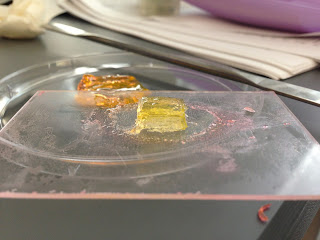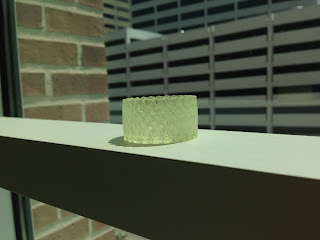Experiments, experiments, experiments. It's part of the reason for participating in AMRI. So what I've decided to capture data on first is power output of the DLP projector I'm using. In this particular case, I'm using the same projectors as the B9, a Vivitek D535.
For capturing the power output, I have access to a power meter and sensor by Coherent. A FieldMaxII meter and a PM150-50C sensor. Couple of points of interest in experimentation is overall power output of the projector, the drop off in power due to to distance from light source and power density per cm^2.
 |
| FieldMaxII |
The first point of interest will be useful when I start testing other projector setups, it'll help form the baseline marker for the various other projectors folks would like to use in a DLP 3D printer. The values gathered will also be good to gauge what power levels are adequate for overall reasonable layer/print times. At the moment, in talking with others working on DLP's in the community, the most important aspect folks look for is lumens (followed by native resolution), most are recommending builders work with at least 2,500 lumens. It'll be nice to see the effect of lumens on power output.
 |
| Tested Red projection |
 |
| Tested Black projection |
 |
| Tested White projection |
One of the question I see being asked a lot is how scalable a DLP 3D printer can be. One would think that pulling back the projector and enlarging to projection area would be all that's needed. Sadly, that's not the case at all, and the reason it'll be interesting to see the power output over various throw distances and size prints. There are a lot of hypothesis and ideas, but it'd be nice to get quantitative values to back things up.
Lastly, power density is interesting to me because it'll allow for us to fine tune our exposure times. The thought is that if we can find the power output over an area, we can use that data to help extrapolate cure times for a specific layer height. On the point of cure times, polymerization rate will also be a future experiment.
Experiments like this is what AMRI is all about, applying the scientific method to create quantitative data for the betterment of research and development. The hope is that having empirical data to back up a lot of things that are taken at just face value will help people make advancements and not stumble over the same problems as others have before them. It's all about anchoring a foundation for which contributors can build upon prior research quickly and adapt results for new ideas.







































